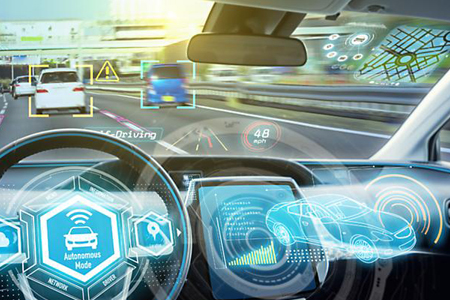Smart transportation (V2X)
The ever-evolving smart transportation field combines wireless communications and GPS tracking systems to enable sending, receiving and storing information in real-time. In the 5G era, Vehicle-to-Everything (V2X) will involve real-time information transmission to and from a vehicle to any entity in a vehicular communication system that incorporates several specific types of communication, such as V2I (vehicle-to-infrastructure), V2N (vehicle-to-network), V2V (vehicle-to vehicle), V2P (vehicle-to-pedestrian), V2D, (vehicle-to-device) and V2G (vehicle-to-grid) communications.
A compelling benefit of the V2X communication technology is to support safe transportation by reducing latency & improving reliability. By sharing data, such as vehicular position and speed to surrounding vehicles and infrastructures through V2X communications, connected vehicles can enhance their awareness of potential accidents and significantly improve collision avoidance.
For the past several years, DSRC (Dedicated Short Range Communication) has been the primary V2X technology available. DSRC permits vehicles to directly communicate with each other through over-the-air messages compliant to the IEEE 802.11p standard. Cellular V2X (C-V2X) communication, using 3GPP based on cellular modem technology, has the potential to become a key enabler for automated driving and intelligent mobility. While C-V2X is also designed to directly connect vehicles with each other as well as with the infrastructure and other road users. It uses a fundamentally different non-interoperable access layer than DSRC. C-V2X allows communication via the LTE network using the 3GPP Release 14, and in the future, the 5G mobile network. Even in areas without mobile network coverage, C-V2X communication still allows an exchange of time sensitive and safety critical information, for example about warnings of potentially hazardous situations. Currently, for active safety systems to properly function between vehicles or between vehicles and other devices, C-V2X is still the best choice of the communication media. C-V2X can effectively support short-range wireless communications with high speed and low latency. The two technologies are addressing identical use-cases and having identical network, security and application layers. In the US, thousands of DSRC Road-Side Units are equipped with DSRC V2X, while China charges forward with C-V2X
Why Unictron?
Unictron offers a complete line of DSRC & C-V2X antennas designed for evolving smart vehicles in a rapidly growing V2X wireless communication market. For autonomous vehicle applications, Unictron offers essential, coveted, quality components for designing vehicular telematics boxes and control units that manage a wide array of functions. For our vehicle manufacturing partners, we partner to help build 5G communication for driver safety and efficiency enhancement. Unictron offers 5G RSU which uses the same 5G telematics box that our autonomous vehicle manufacturers use, but applied differently as road side units.
Products featured:
CRU0100(5G RSU) for 5G telematics box
Our antenna experts would love to help you further optimize or customize your solution to meet the requirements of various environments or a different ground plane size is used.

